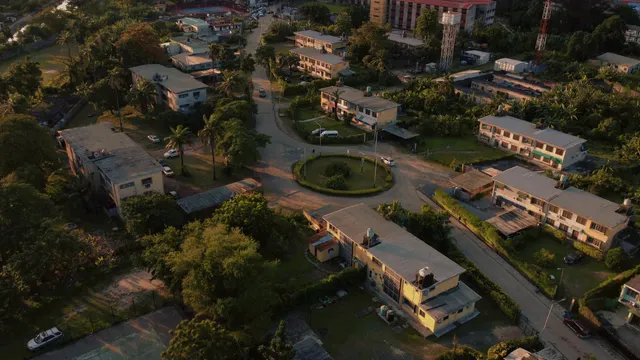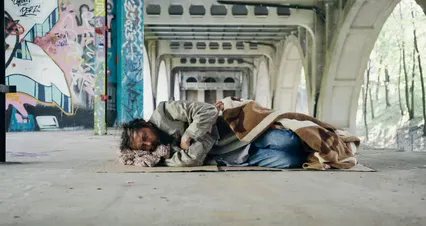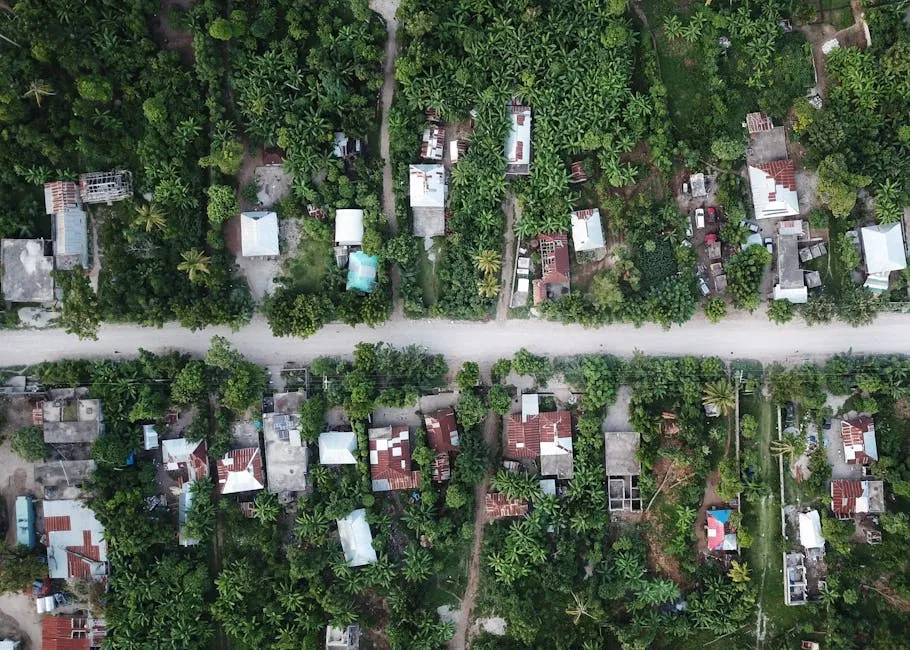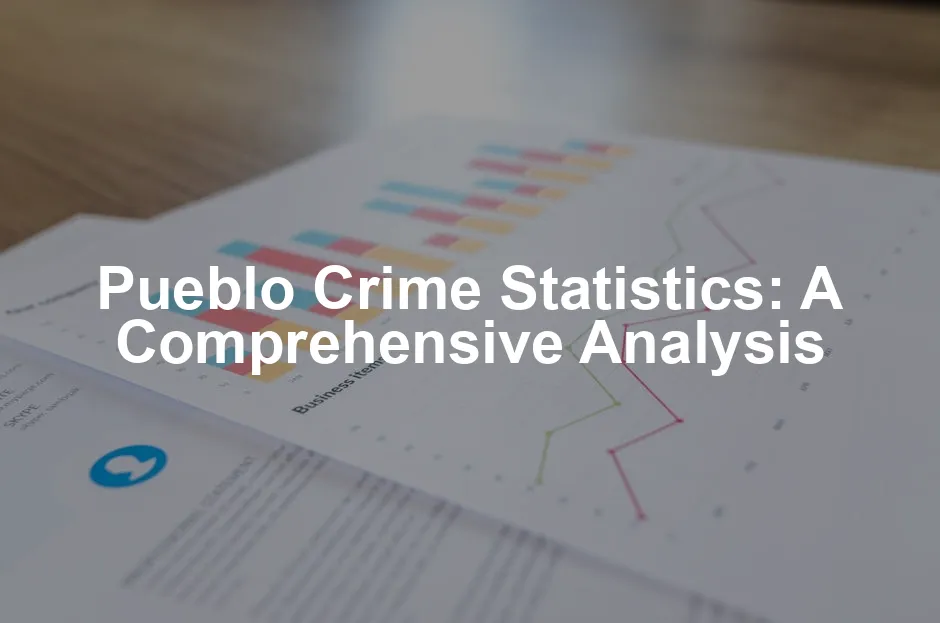Please let us know what you think about our content by leaving a comment down below!
Thank you for reading till here 🙂
Introduction
Nestled in the heart of Colorado, Pueblo is a city rich in history and culture. Known for its vibrant arts scene and historic architecture, Pueblo offers an intriguing blend of old and new. However, its charm is overshadowed by an unsettling reality: the city’s crime statistics tell a different story.
As of late 2022, Pueblo boasts a crime rate of 81 per 1,000 residents, which places it among the highest in the nation. The likelihood of becoming a victim of a crime in Pueblo is alarmingly high, with residents facing a 1 in 12 chance. To add to the concern, Pueblo’s crime rate is a staggering 245% higher than the national average. Understanding these statistics is crucial for various stakeholders—residents looking to feel secure, potential movers weighing their options, and policymakers seeking effective solutions.

For current residents, crime statistics are essential in making informed decisions about personal safety and community engagement. They offer a window into the realities of living in Pueblo and help foster discussions about improvement and safety initiatives. For potential movers, these statistics can be a deal-breaker or a motivating factor to join local efforts for change. Lastly, for policymakers, crime data serves as a critical tool for resource allocation and strategy development, aiming to improve safety and quality of life in this historic city.
In the following sections, we’ll take a closer look at the current crime landscape in Pueblo. We’ll analyze the overall crime rates, delve into violent and property crime statistics, and discuss the implications of these figures for the community. Understanding Pueblo’s crime statistics is not just about numbers; it’s about people, safety, and the future of a city that deserves better.
The Current Crime Landscape in Pueblo
Overview of Crime Rates
Pueblo’s overall crime rate stands at 81 per 1,000 residents, which is a stark indicator of safety challenges within the city. This translates to an eye-opening comparison: Pueblo’s crime rate is 245% higher than the national average. On a national scale, one might expect a safe haven, but Pueblo tells a different tale.

To grasp the full scope of crime in Pueblo, we must examine both violent and property crime rates. Violent crime includes serious offenses like murder, rape, robbery, and assault. Property crime, on the other hand, covers theft, burglary, and motor vehicle theft. Both categories demand our attention and analysis, as they paint a complete picture of the city’s safety landscape.
In every corner of Pueblo, residents are faced with a challenging reality. With crime rates soaring, it becomes increasingly important for community members to engage in discussions about safety, preventative measures, and local resources. Understanding the crime statistics may not solve the issues overnight, but it serves as the first step towards action and awareness.
As the community seeks to improve safety, consider investing in a Home Security Camera System. A robust security system can provide peace of mind, allowing residents to monitor their property and deter potential intruders. In a city where crime rates are high, having a reliable security camera can be a game-changer for families and individuals alike.
Violent Crime Statistics
Pueblo’s overall violent crime rate sits at 16.37 per 1,000 residents. This translates into some sobering figures. In 2022, the city reported 29 murders, which is significantly higher than the national average of around 6.3. When it comes to rape, Pueblo saw 183 incidents, way above the U.S. average of 40.0. Robberies also made a notable appearance with 362 incidents, compared to the national rate of 66.1.

However, let’s not forget the heavyweight of violent crime: assault. With 1,251 reported incidents, Pueblo’s assault rate is nearly four times the national average of 268.2. This paints a picture of a city struggling with serious offenses, and it’s essential to recognize the implications.
When we stack these numbers against national averages, it’s clear that Pueblo is wrestling with violent crime levels that feel more like a horror movie plot than reality. While the national average for violent crime is alarming in its own right, Pueblo’s statistics are a reminder that there’s work to be done to foster a safer community.
For those looking to enhance personal safety, consider keeping a Personal Safety Alarm handy. These devices can emit a loud sound to deter attackers and alert others nearby, providing an extra layer of security for residents navigating the city.
Property Crime Statistics
The property crime rate in Pueblo is equally unsettling, standing at 64.57 per 1,000 residents. Breaking it down, the numbers show 1,336 burglaries, 4,155 thefts, and 1,706 motor vehicle thefts. Yes, you read that right—motor vehicle theft is a significant issue here, with a rate of 15.31 per 1,000 residents.

This high rate of motor vehicle theft has serious implications for the community. Not only does it create a sense of insecurity among residents, but it also strains local law enforcement resources and makes insurance premiums rise faster than a hot air balloon. It’s a vicious cycle that demands attention.
To combat these property crimes, investing in a Smart Door Lock can significantly enhance home security. With features like remote locking and alerts, these locks offer convenience and protection, ensuring that your home remains a safe haven.
Pueblo’s crime statistics illustrate an urgent need for community initiatives aimed at preventing property crimes. While residents may feel the pinch in their wallets, the true cost lies in the erosion of safety and trust within the community. Understanding these statistics not only highlights the challenges but also underlines the importance of collective efforts toward safety and prevention.
Crime Trend Analysis
Pueblo has experienced notable shifts in crime trends recently. The overall crime rate has surged by 14.6% when compared to the previous year. This alarming increase reflects a growing concern for community safety.

Violent crimes, in particular, have taken a significant leap, soaring by 28.4%. This spike raises eyebrows and questions about the effectiveness of local safety measures. Such an uptick in violent crime can greatly impact how residents perceive their safety and security.
The implications of these rising trends are profound. As crime rates climb, residents may feel less secure, prompting a sense of unease. It’s crucial for community leaders to address these issues head-on to restore confidence in public safety.
While addressing these issues, having an Emergency Survival Kit at home can provide peace of mind. This kit ensures that you have essential supplies ready in case of unforeseen circumstances, whether they are natural disasters or personal safety emergencies.
Community Perception of Safety
Recent surveys reveal some startling insights into how residents feel about safety in Pueblo. A staggering 76% of residents believe there is too much crime in their city. This perception is significant, as it can influence daily life and community engagement.

Interestingly, community perception often diverges from actual crime statistics. While the numbers paint a grim picture, local media coverage and public discourse play pivotal roles in shaping these feelings. Sensationalized reporting can amplify fears, even if the actual risk may not match the heightened perception.
Media narratives can create a cycle of fear, making residents more anxious and less trusting of law enforcement. However, this perception can also spark community action, prompting residents to advocate for improved safety measures and engage with local officials. Understanding this dynamic is essential for fostering a safer environment in Pueblo.
To further empower residents, consider a Neighborhood Watch Sign to alert potential intruders that the community is vigilant. It not only deters crime but also fosters a sense of unity among neighbors.
Crime Rate Comparisons
When we pit Pueblo against nearby cities, the contrast is striking. Take Pueblo West, for instance. With a population of around 32,842, it boasts a crime rate of just 4,926 per 100,000 residents. That’s a sharp contrast to Pueblo’s staggering 8,010 per 100,000. Fountain, another close neighbor, also fares better with lower crime rates, making it a more attractive option for those seeking peace of mind.

But why do these communities enjoy lower crime rates? One reason could be their smaller populations. Fewer people often mean fewer opportunities for crime. Additionally, both Pueblo West and Fountain have invested in community resources, such as stronger neighborhood watch programs and local initiatives that promote safety. With a focus on community engagement, these areas seem to cultivate a more secure environment.
The resources available in a community play a significant role in shaping crime rates. For instance, Pueblo’s police-to-population ratio stands at 2.2 officers per 1,000 residents, compared to the national average of 3.25. This lower number can leave law enforcement stretched thin. Meanwhile, areas like Pueblo West benefit from better resource allocation, enhancing their ability to maintain safety.
In short, Pueblo’s crime statistics reveal a need for strategic improvements. By learning from the successes of surrounding communities and boosting local resources, Pueblo can tackle crime head-on. To further enhance your personal security, consider investing in a Fire Extinguisher for your home. It’s a small investment that can save lives and property in case of an emergency.
Factors Contributing to Crime Rates
Several factors influence Pueblo’s crime rates. Economic conditions top the list. With a cost of living that’s 11.75% lower than the national average, many residents may struggle to make ends meet. This financial strain can lead to an uptick in crime as individuals seek alternative means for survival.

Education levels also play a crucial role. Local statistics show that 79.6% of Pueblo residents have graduated high school, which is below the national average of 83%. A community with higher education levels typically sees lower crime rates, as education often correlates with better job opportunities and social stability.
Law enforcement presence is another significant factor. With 2.2 police officers per 1,000 residents, Pueblo’s force is indeed leaner than the national average. This scarcity can hinder effective crime prevention and response. Residents may feel less protected, leading to a community perception that exacerbates the fear of crime.
Social issues like gang activity and drug trafficking further complicate the situation. Gang-related crimes account for a notable portion of Pueblo’s violent crime statistics. Mayor Heather Graham has pointed out that these issues require urgent community attention and collaboration among parents, law enforcement, and local organizations.

In summary, addressing economic challenges, improving educational opportunities, and enhancing law enforcement resources are key to reducing crime rates in Pueblo. A multifaceted approach will help create a safer environment for all residents.
Overview of Popular Neighborhoods
Pueblo is home to several neighborhoods, each with its own unique vibe and safety profile. Here’s a quick look at some popular areas:
- Pueblo West: This suburban neighborhood is often favored by families. It boasts more spacious homes and a tight-knit community feel. The crime rate here is lower than in the city center, making it a safer choice for raising kids.
- Hobson / Swallows: Known for its parks and recreational facilities, this neighborhood enjoys a decent safety rating. However, residents should remain cautious, as property crimes occasionally pop up.
- Pueblo Reservoir Rd / Juniper Rd: This area offers stunning views and outdoor activities. While it’s generally safe, residents should stay aware of their surroundings, especially at night.
- Wild Horse: A quieter neighborhood, Wild Horse is popular among retirees. The crime rate here is relatively low, making it a peaceful place to live.
- Henkel / Pinon: This neighborhood features a mix of residential and commercial properties. While it has a lively atmosphere, some crime rates are higher compared to others, particularly property crimes.

Safety ratings in these neighborhoods vary, but community engagement is essential for improvement. Residents can enhance their neighborhood’s safety by staying informed and involved.
Safety Indices and Community Resources
Crime risk indices provide valuable insights into safety for residents and potential movers. These indices rank neighborhoods on a scale from 1 to 100, with higher numbers indicating lower crime risk. For Pueblo, many areas fall below the national average, signaling a need for increased safety measures.

Community resources are crucial for crime prevention and support. Local organizations, such as neighborhood watch programs, provide residents with tools and strategies to enhance safety. Additionally, the Pueblo Police Department often holds community meetings to discuss safety concerns and gather resident input.
By participating in these initiatives, residents can foster a stronger sense of community and work towards reducing crime together. Awareness of crime trends and active involvement can help transform neighborhoods into safer places for everyone.
Conclusion
Pueblo’s crime statistics reveal a complex narrative. With a crime rate of 81 per 1,000 residents, the city faces significant safety challenges. The overall crime rate is 245% higher than the national average, which should alarm residents, policymakers, and potential movers alike. While violent crimes are particularly concerning, property crimes are also prevalent, impacting the community’s sense of security.

As we recapped the key findings, it’s clear that ongoing community engagement is vital. Residents must work hand-in-hand with law enforcement to address these issues. Initiatives such as neighborhood watch programs and community forums can bolster safety. Residents should feel empowered to voice their concerns and collaborate with law enforcement to implement effective strategies.
Moreover, the city’s leadership must prioritize resource allocation for law enforcement. With 2.2 officers per 1,000 residents, Pueblo’s police force is stretched thin, making it challenging to respond effectively to crime. Increasing police presence, improving training, and addressing staffing shortages are critical steps toward enhancing community safety.
In conclusion, it’s time for residents and community leaders to come together. By fostering collaboration, increasing awareness, and supporting law enforcement, Pueblo can work toward reducing crime rates. The goal is a safer, more vibrant community where residents can feel secure and thrive. Let’s stand united and take action for a brighter future!
FAQs
What is the current crime rate in Pueblo, Colorado?
The current crime rate in Pueblo stands at 81 per 1,000 residents. This statistic highlights the significant safety challenges residents face.
How does Pueblo’s crime rate compare to other cities in Colorado?
Pueblo’s crime rate is notably higher than many other Colorado cities. For instance, nearby Fountain has a much lower crime rate, making it a safer choice for many.
What types of crimes are most common in Pueblo?
Violent crimes, including assault and robbery, are prevalent. Property crimes such as theft and burglary also contribute significantly to the overall crime rate.
What measures are being taken to reduce crime in Pueblo?
Community initiatives like neighborhood watch programs and city-led safety forums are being implemented. Law enforcement is also restructuring to improve response and prevention strategies.
How can residents stay informed about crime in their neighborhoods?
Residents can check local police reports, subscribe to community newsletters, and attend neighborhood meetings to stay updated on crime-related developments.
For a deeper understanding of crime in the area, you can explore the Pueblo Colorado Crime Statistics.
All images from Pexels




